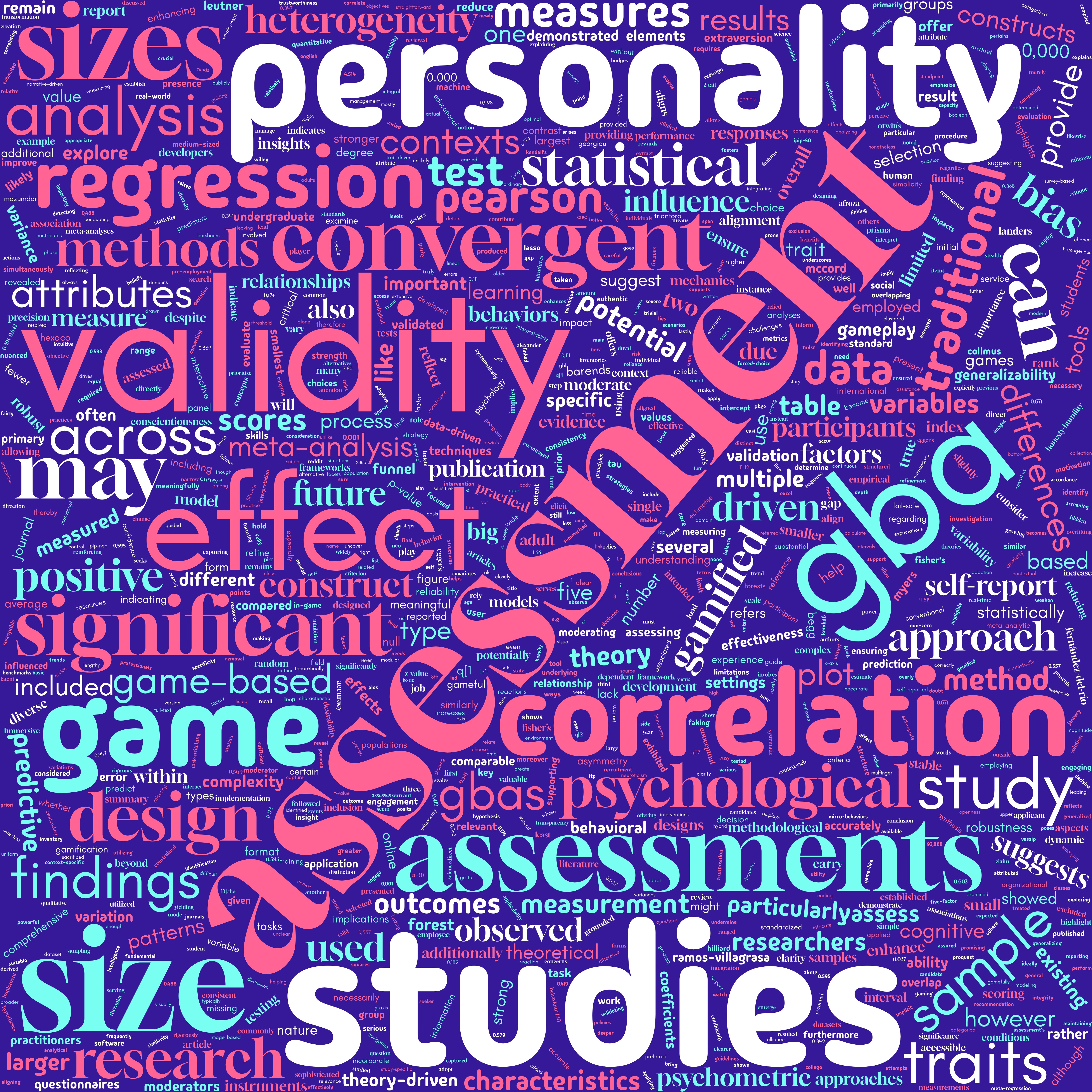Convergent Validity of Game-Based Assessment: A Meta-Analysis
DOI:
https://doi.org/10.17083/etxn7795Keywords:
Serious Game, Meta-Analysis, Validity, Assessment tools, Psychometrics evaluation, Game-Based AssessmentAbstract
Game-Based Assessments (GBAs) have emerged as innovative tools for measuring personality traits, particularly in recruitment and employee selection. This meta-analysis aims to evaluate the convergent validity of GBAs compared to traditional self-report personality measures, addressing ongoing concerns about their psychometric robustness. A total of 18 studies from 13 peer-reviewed articles (2002–2025) were systematically reviewed using data from Scopus, ProQuest, Wiley Online Library, and ScienceDirect. Random-effects modeling, heterogeneity analysis, and publication bias tests were conducted, with sample size, game type, and statistical method examined as potential moderators. Findings revealed a moderate and statistically significant overall effect size (r = .516, Z = 8.088, p < .001), indicating meaningful convergence between GBAs and self-report measures. Despite this, substantial heterogeneity across studies was observed, with no significant moderation effects and minimal evidence of publication bias. This study offers the first comprehensive meta-analytic synthesis of GBA convergent validity, contributing original empirical support for their utility while critically highlighting conceptual issues such as circular validation and the absence of standardized frameworks. The impact of this research lies in its advancement of the psychometric foundations for GBAs and its call for future validation efforts using methods like item response theory and predictive designs linked to behavioral outcomes.

Downloads
Published
Issue
Section
License
Copyright (c) 2025 Fadillah, Rahmat Hidayat, Agung Santoso

This work is licensed under a Creative Commons Attribution-NonCommercial-NoDerivatives 4.0 International License.
IJSG copyright information is provided here.